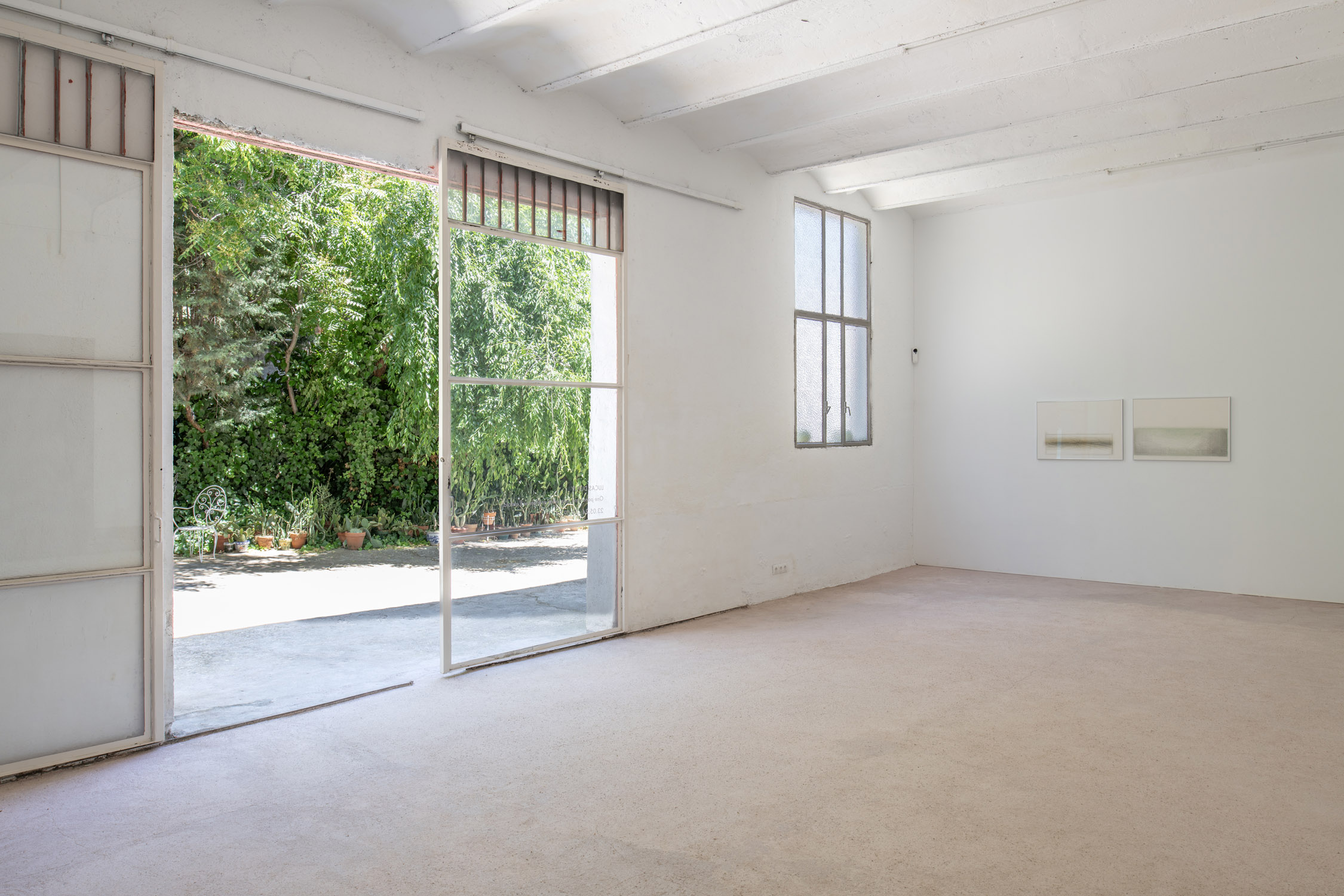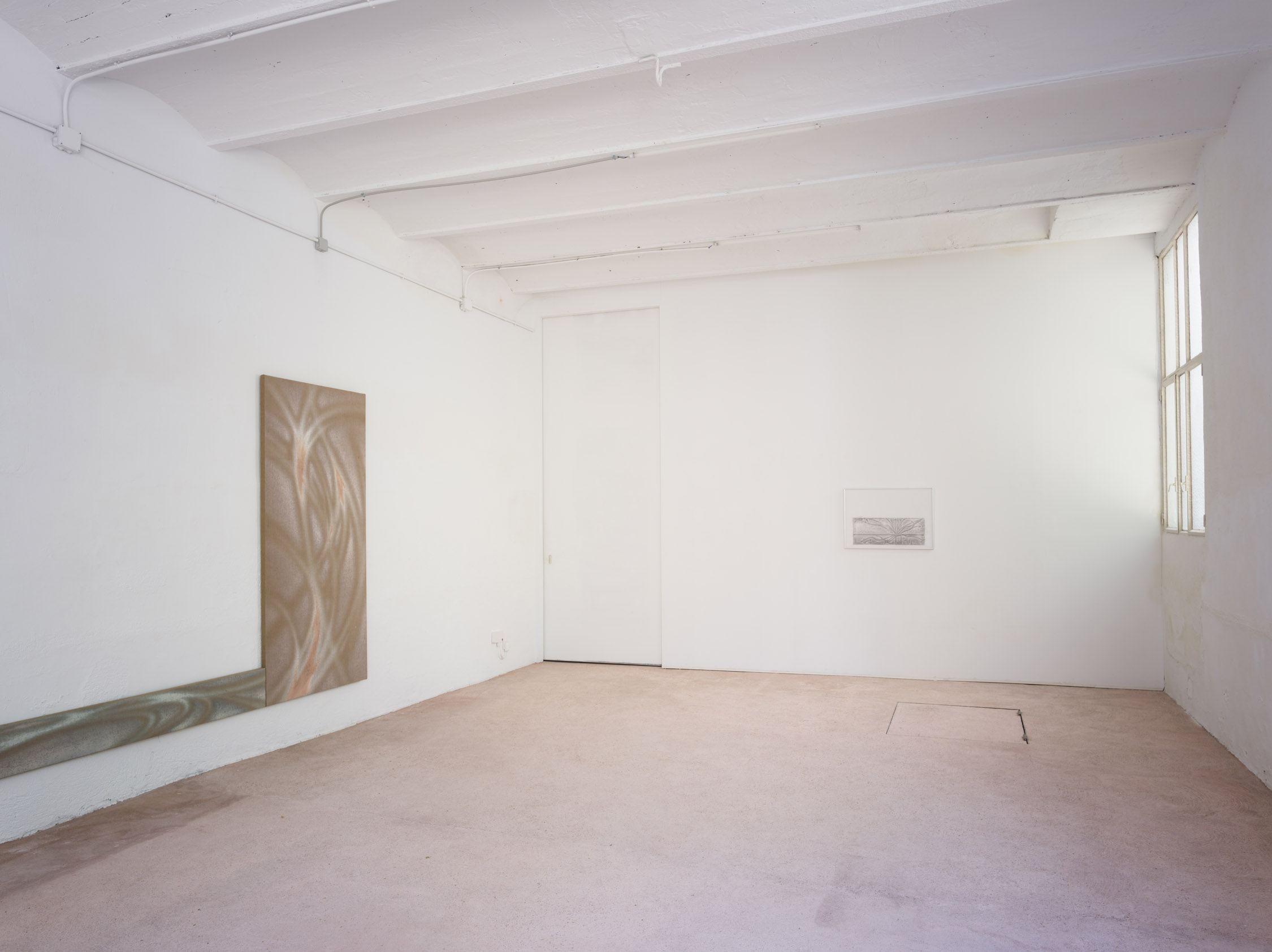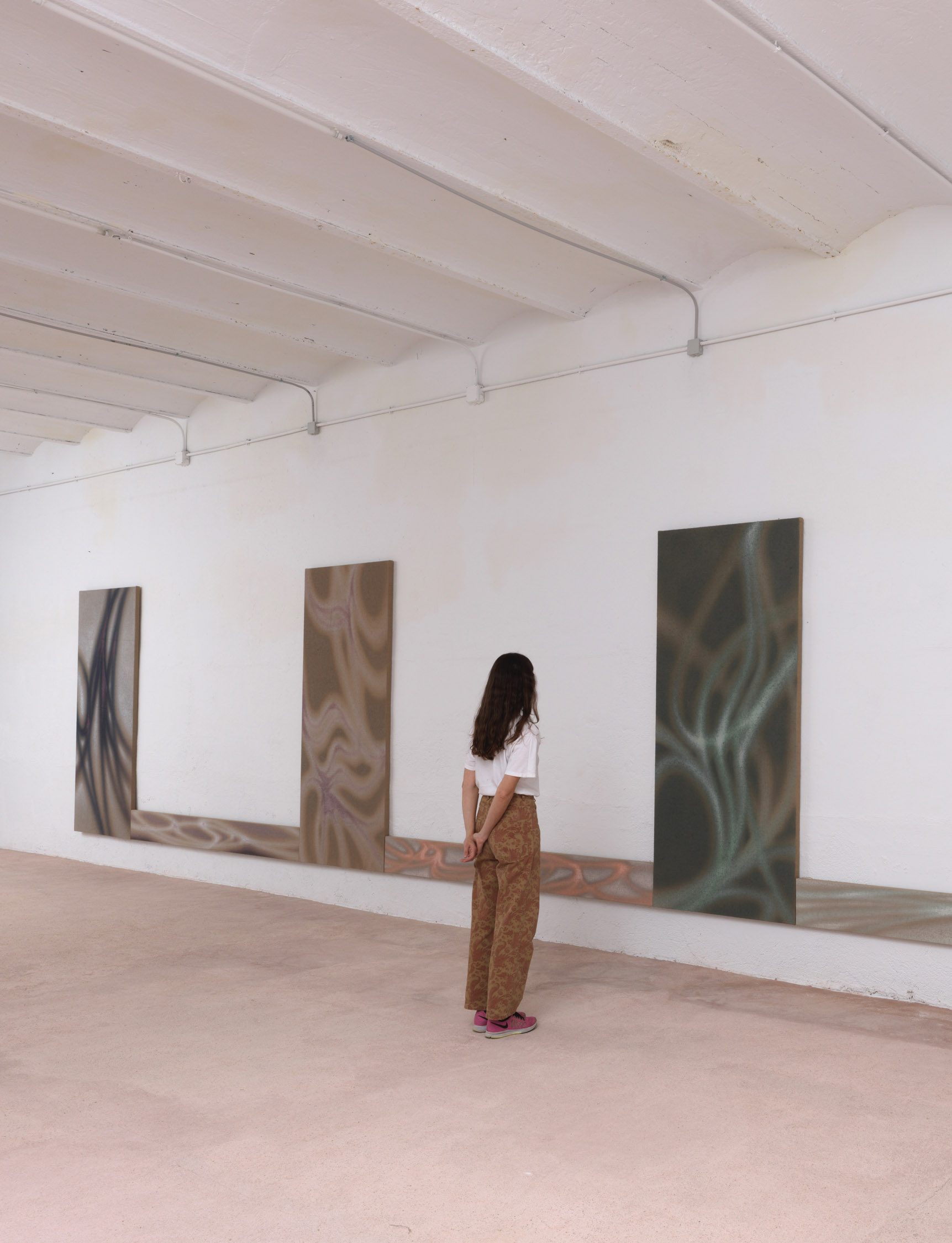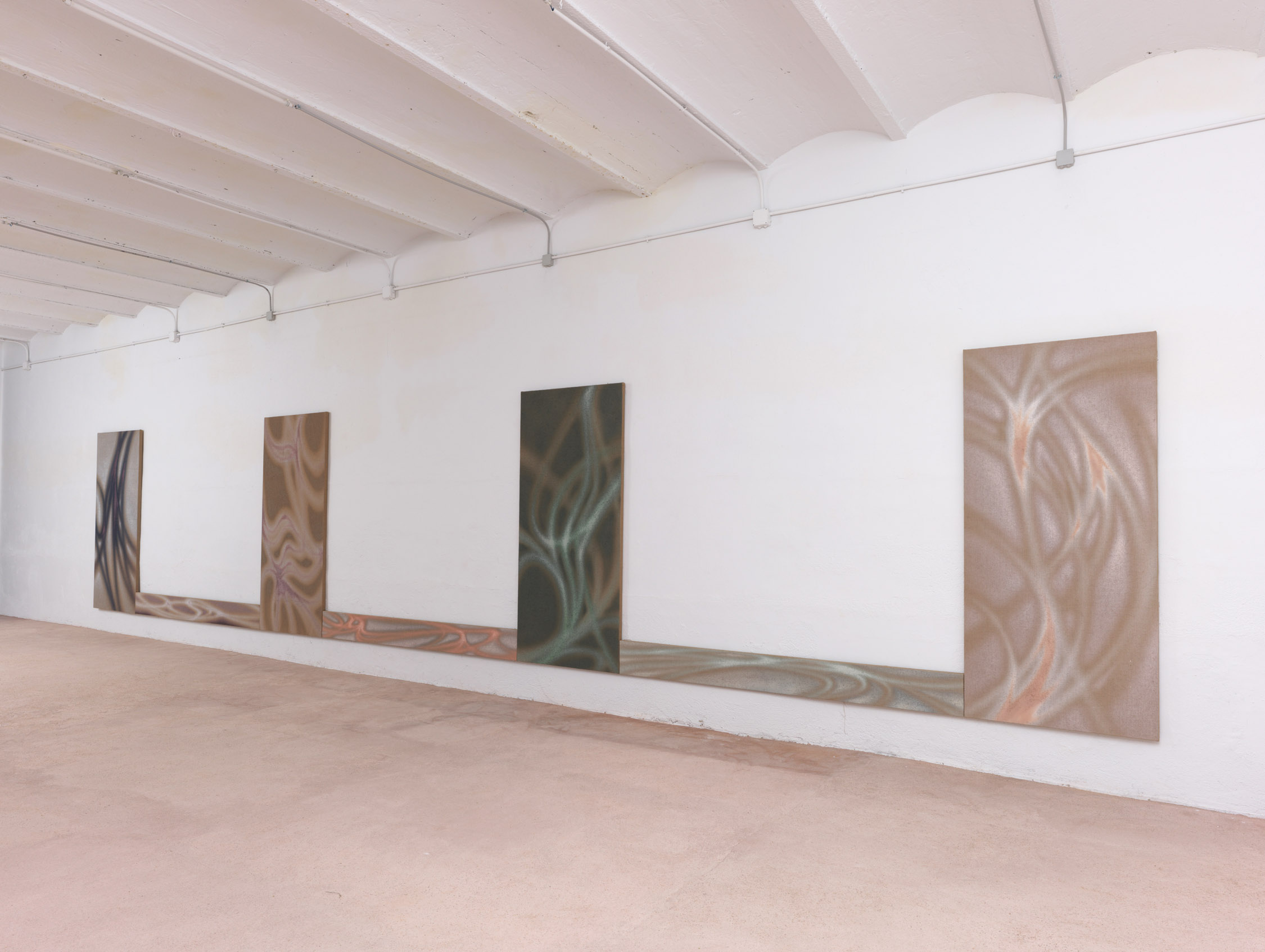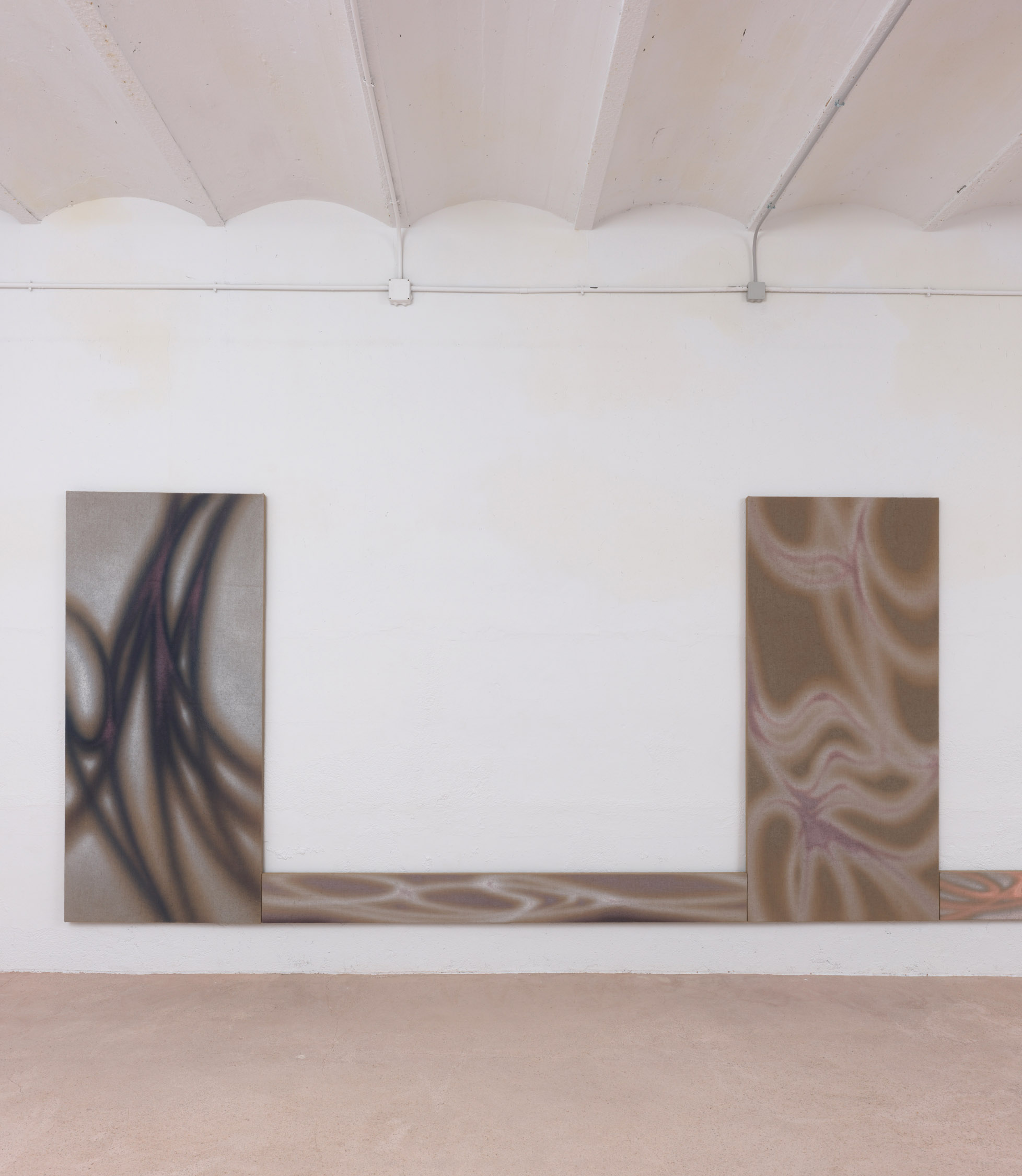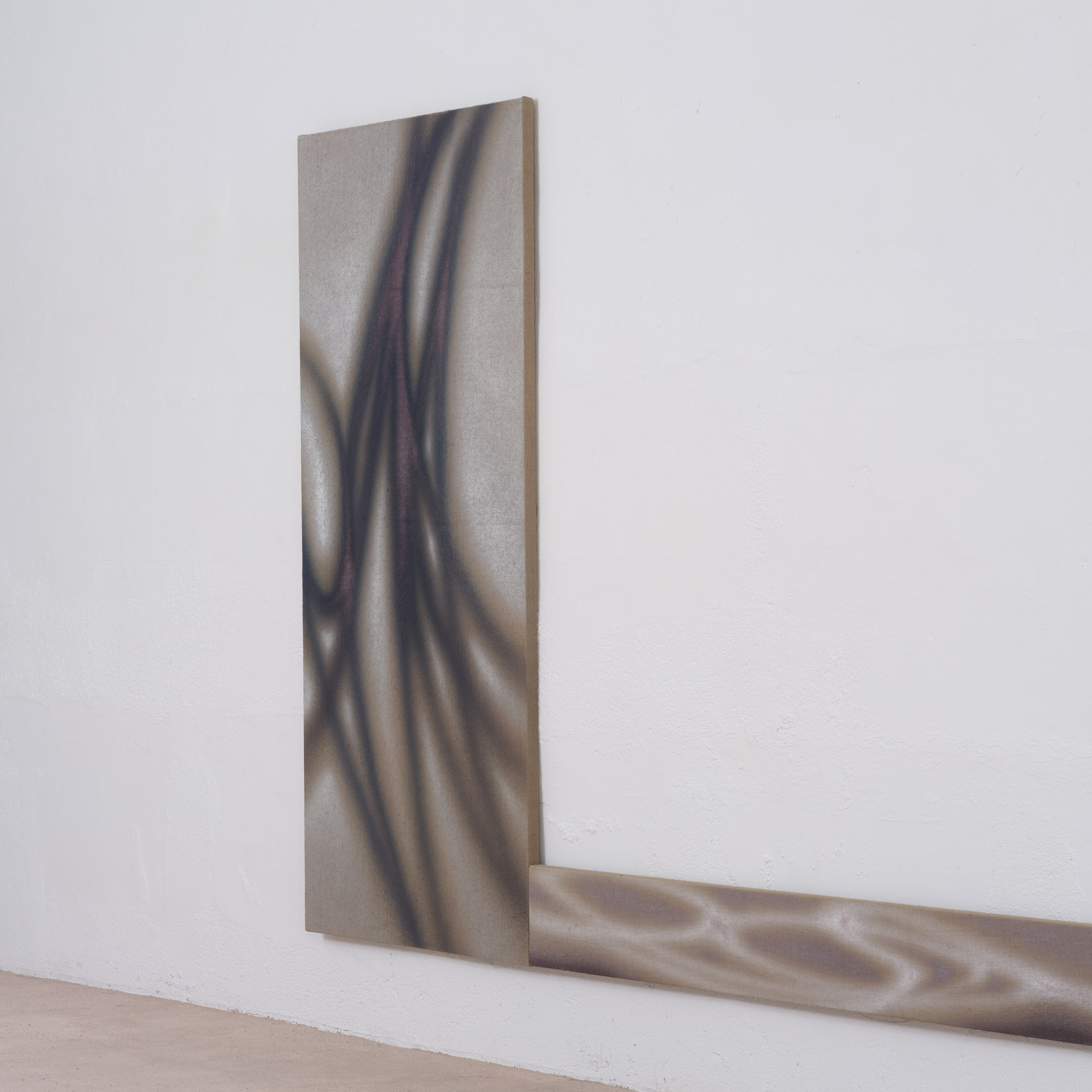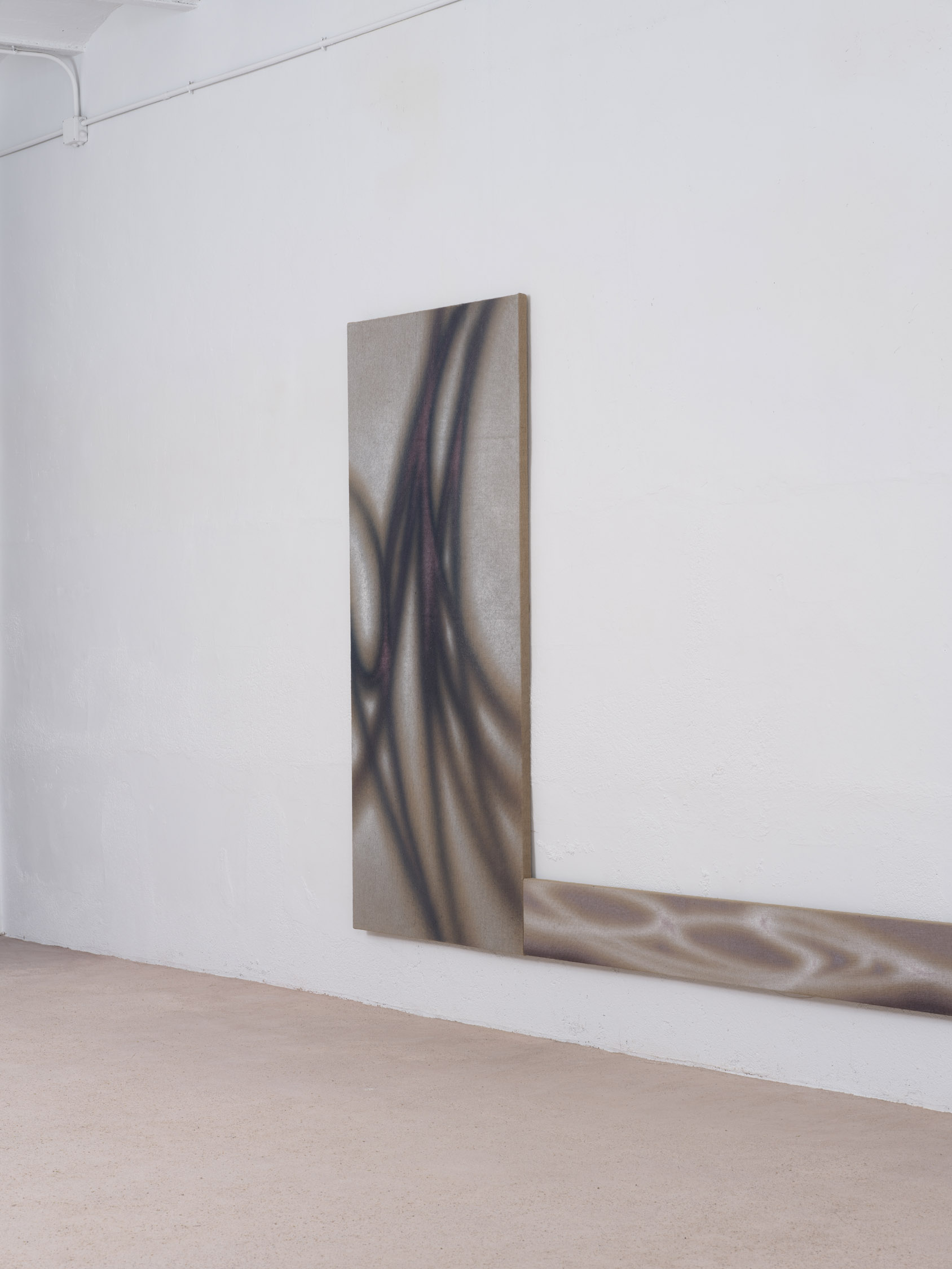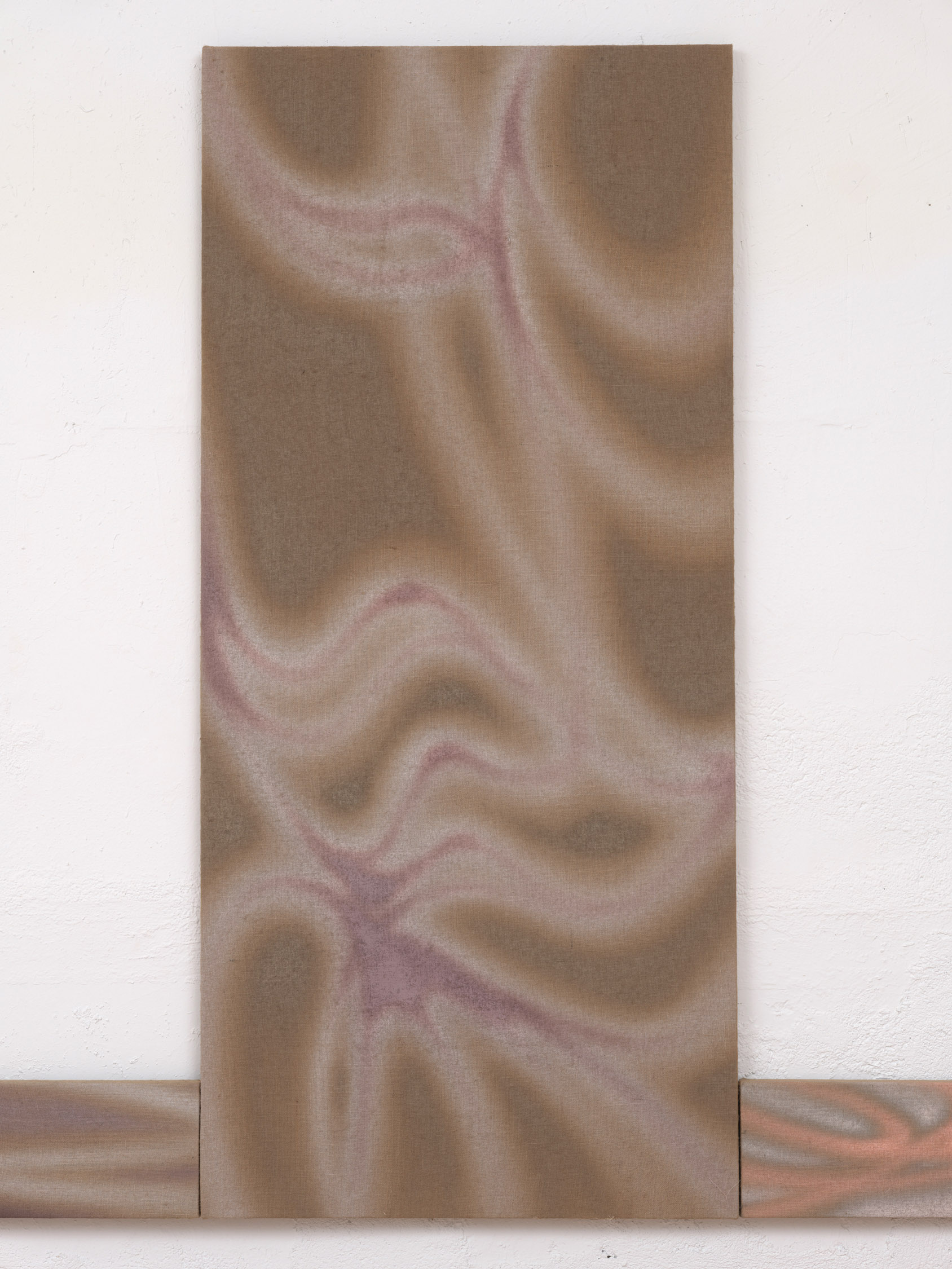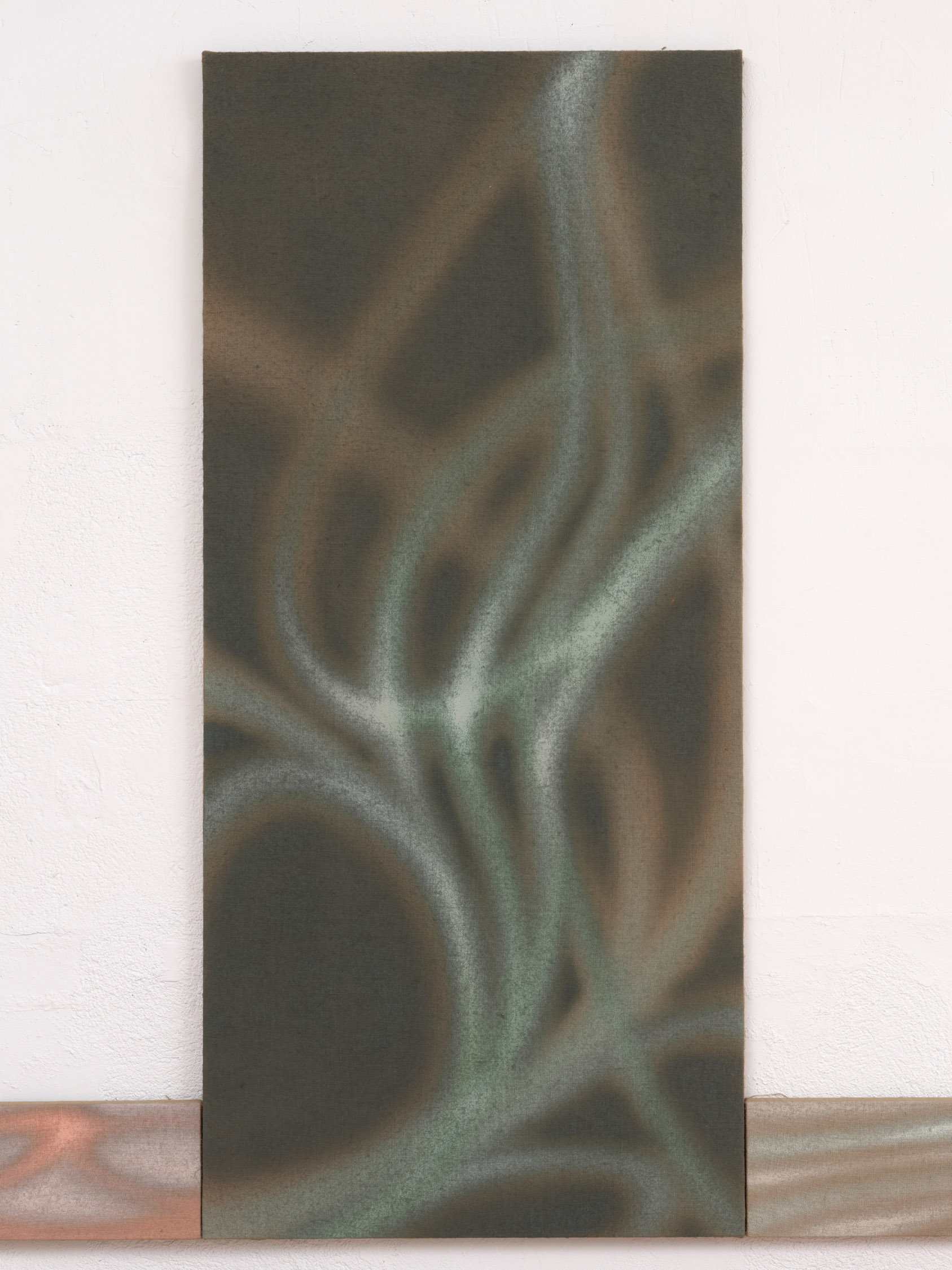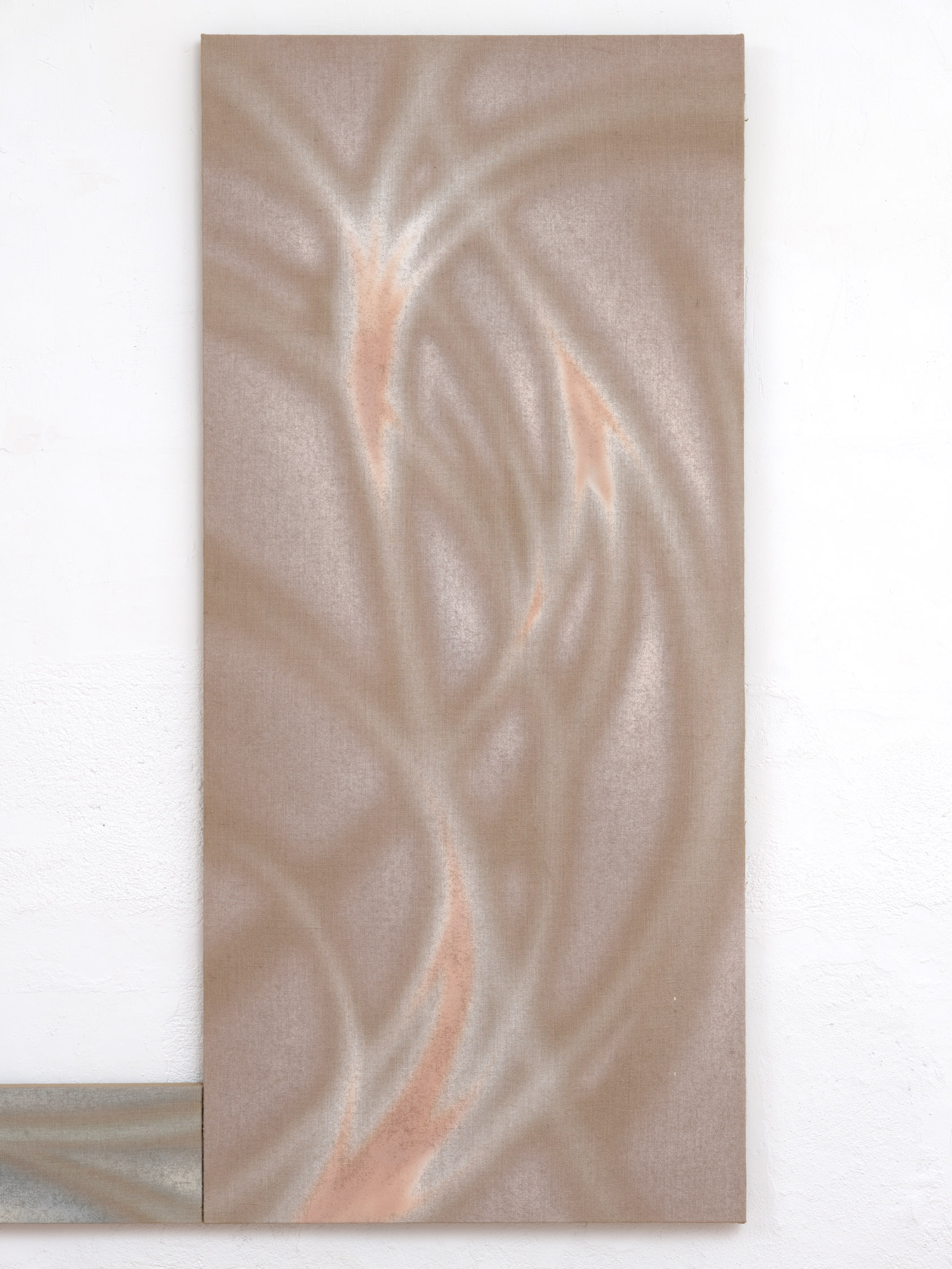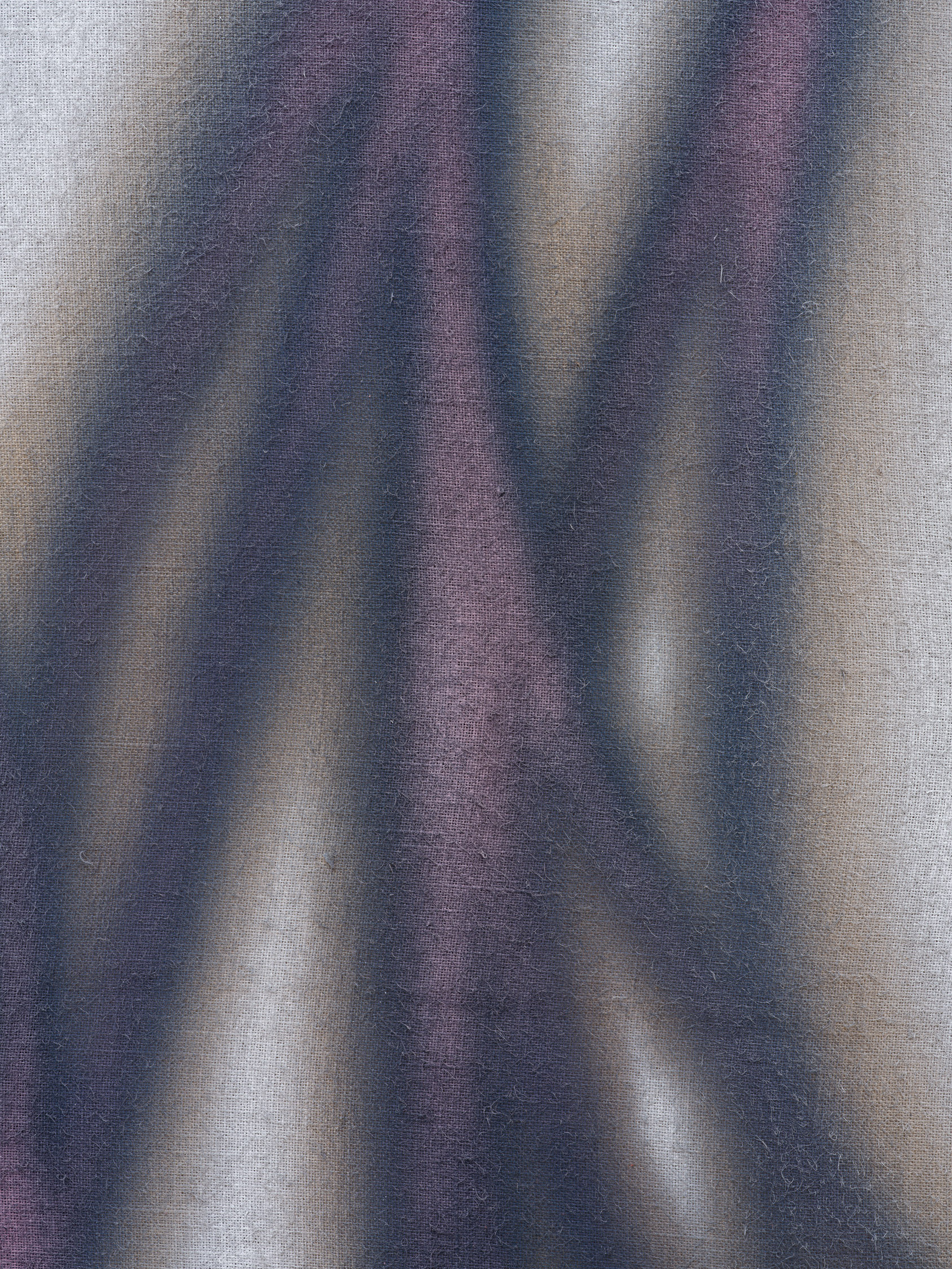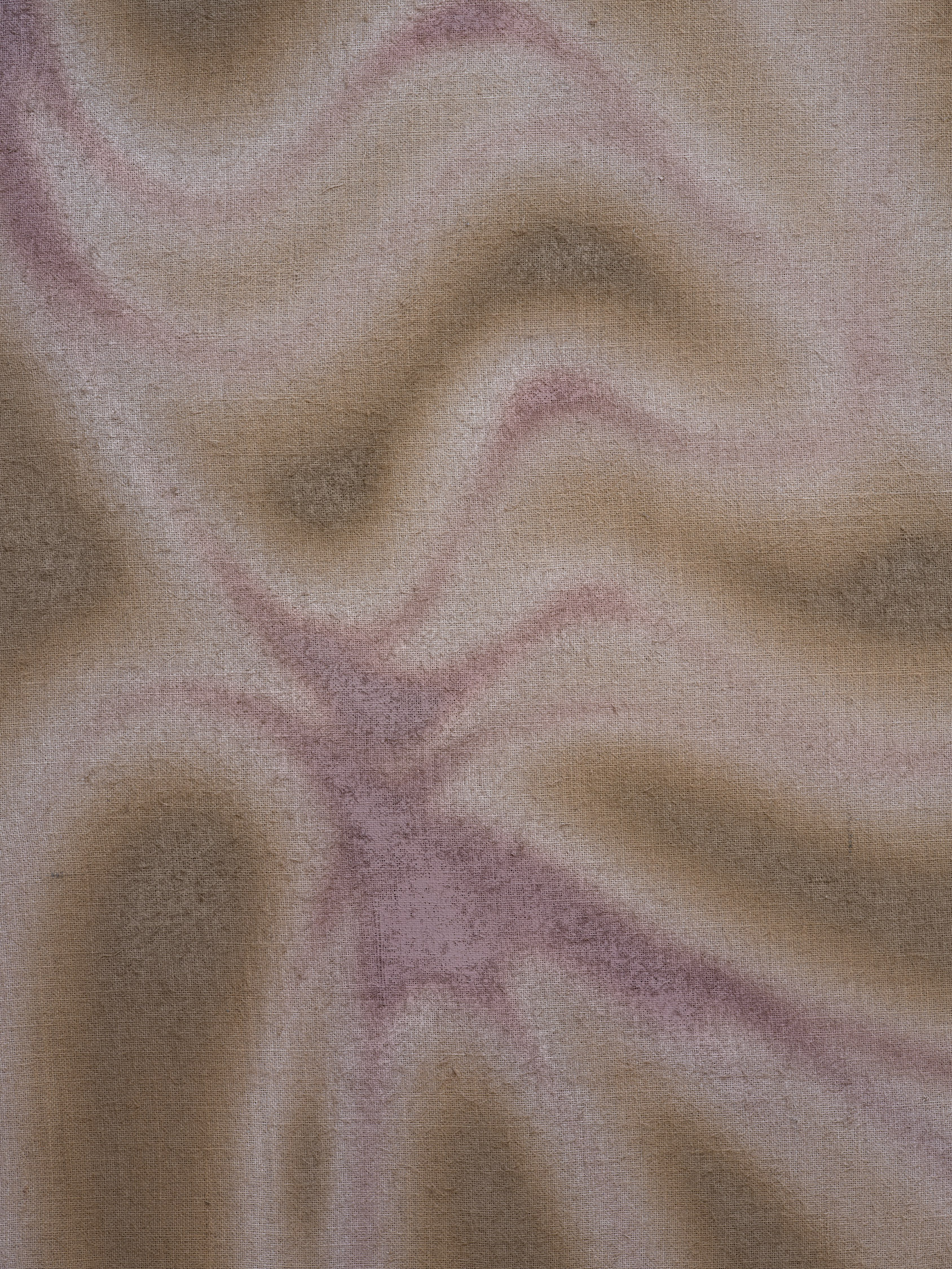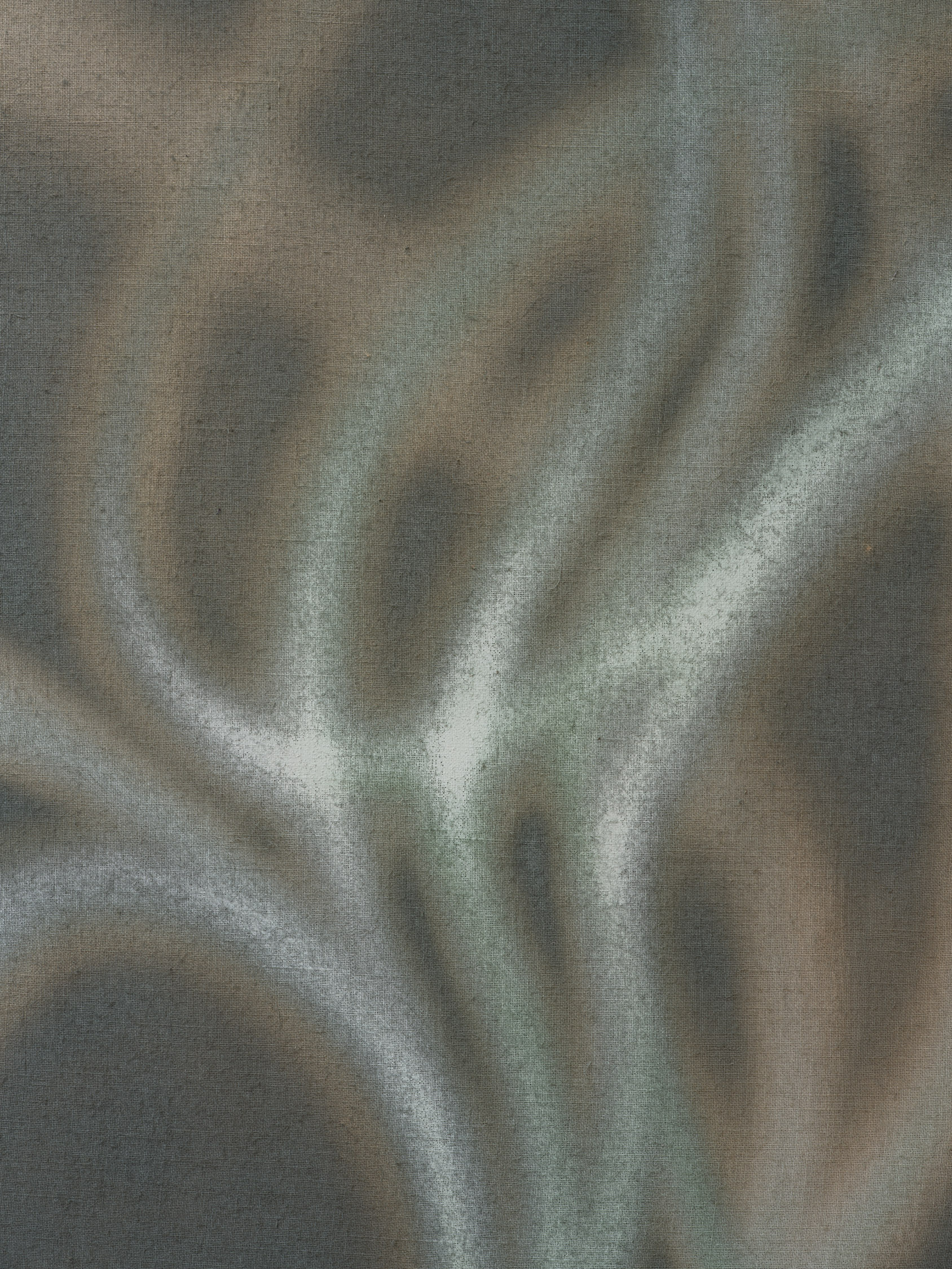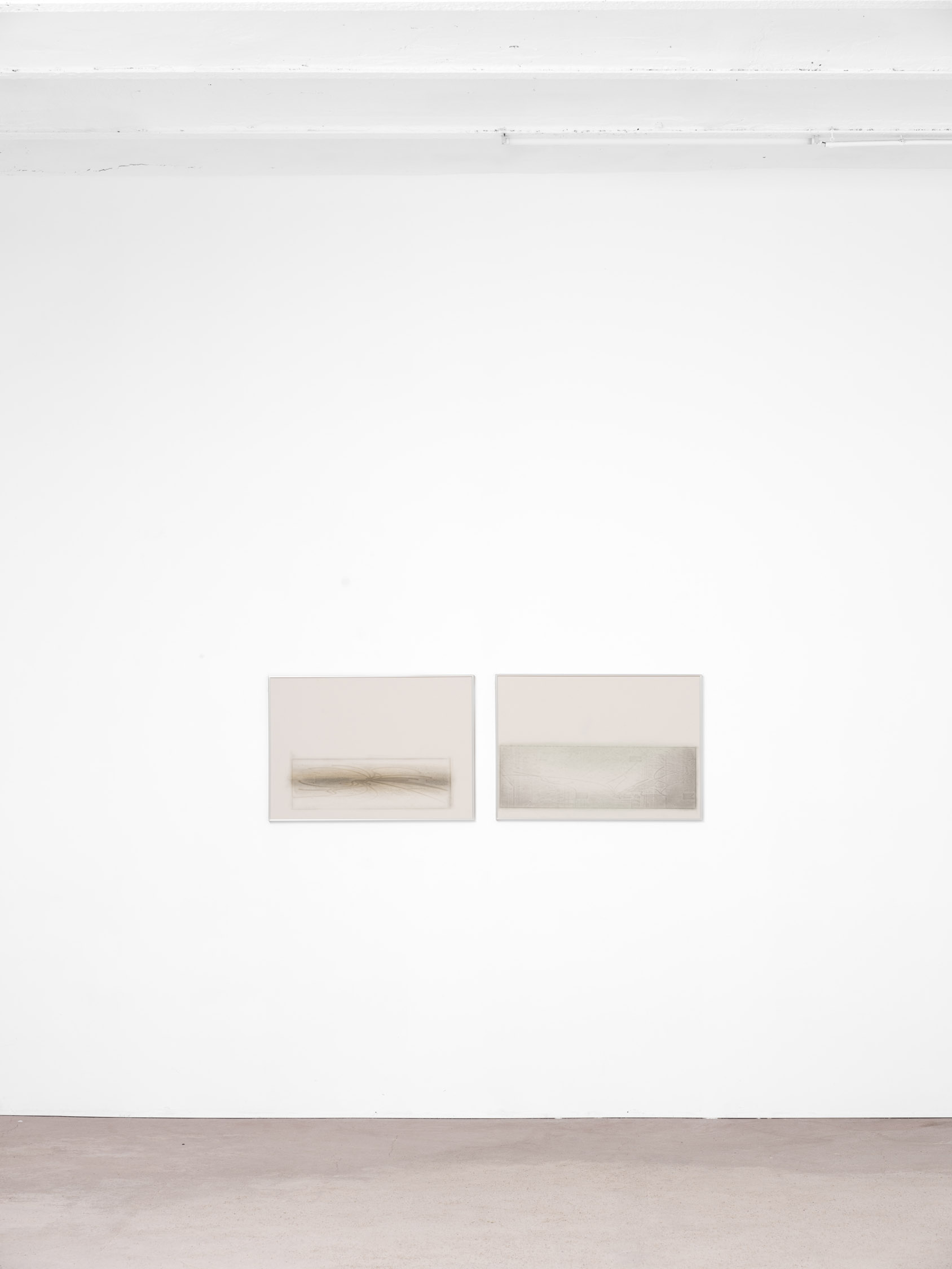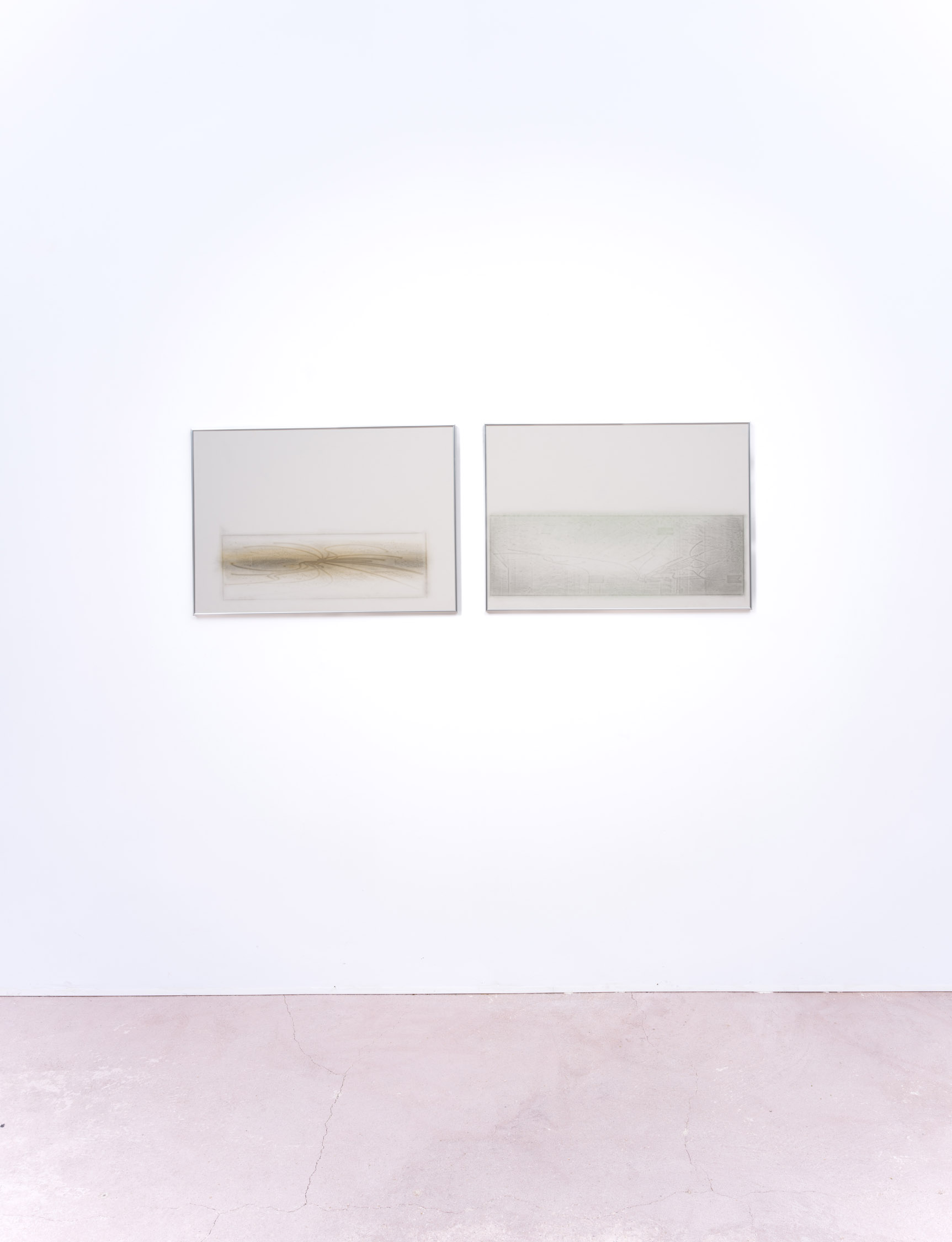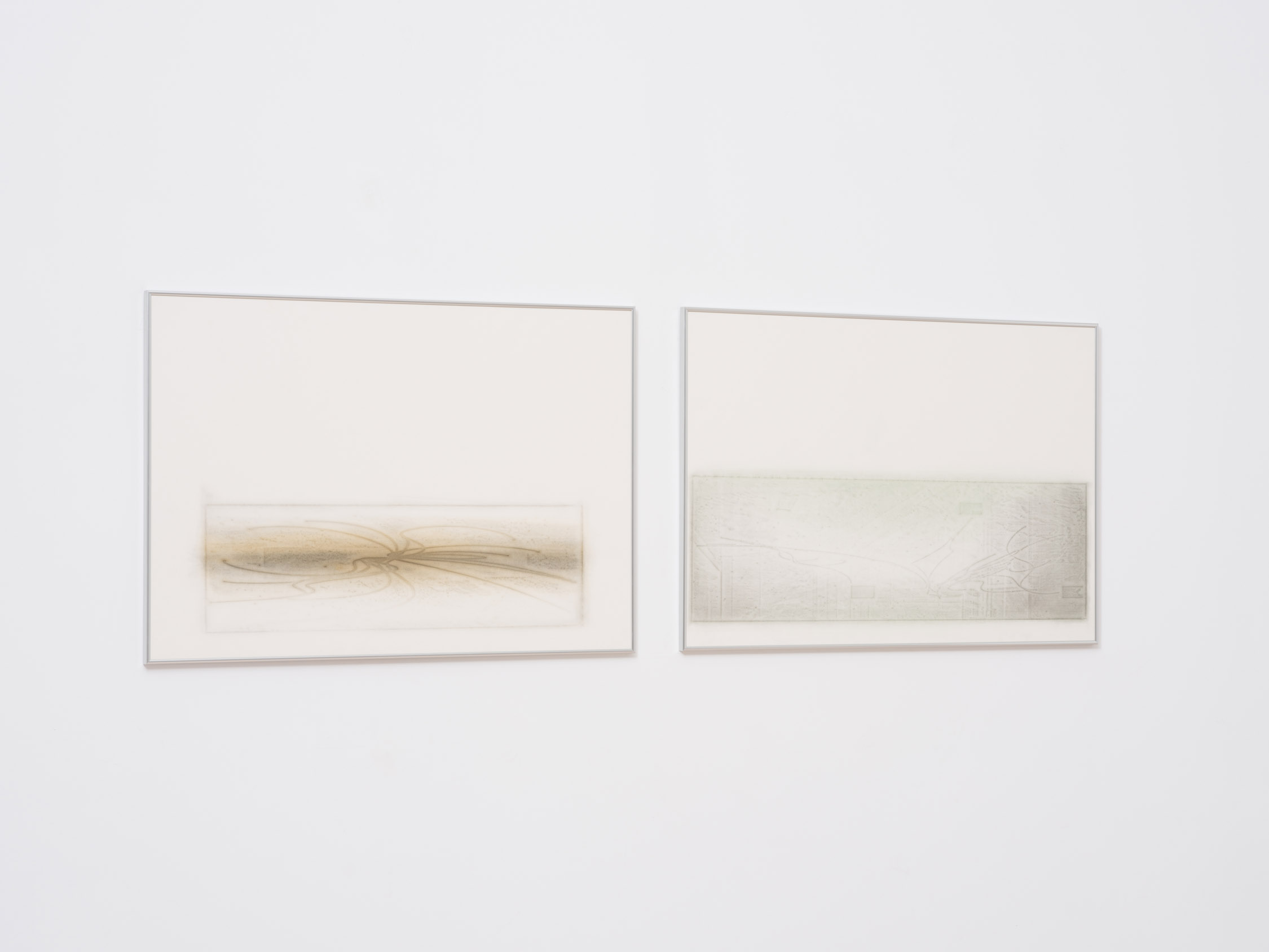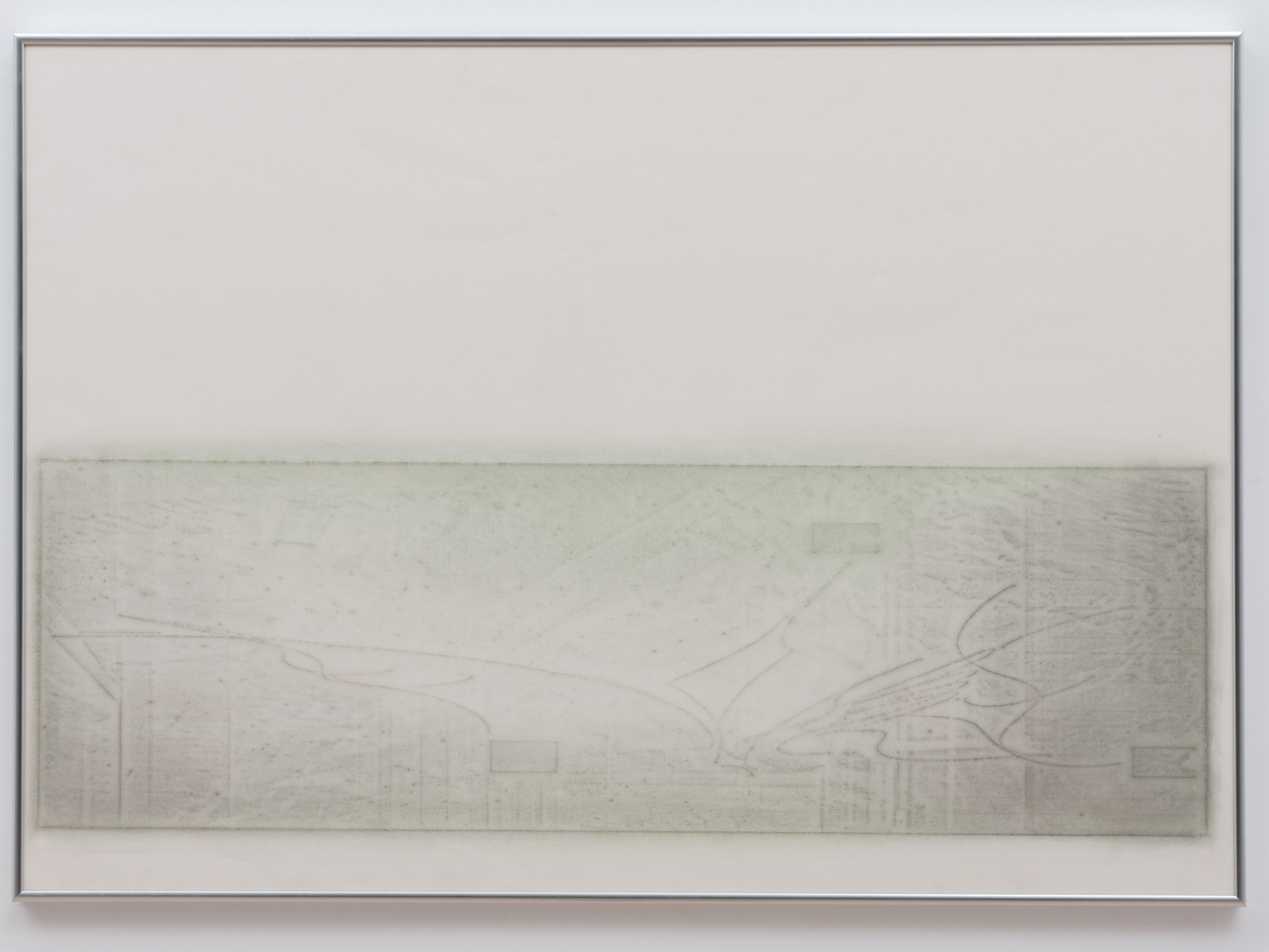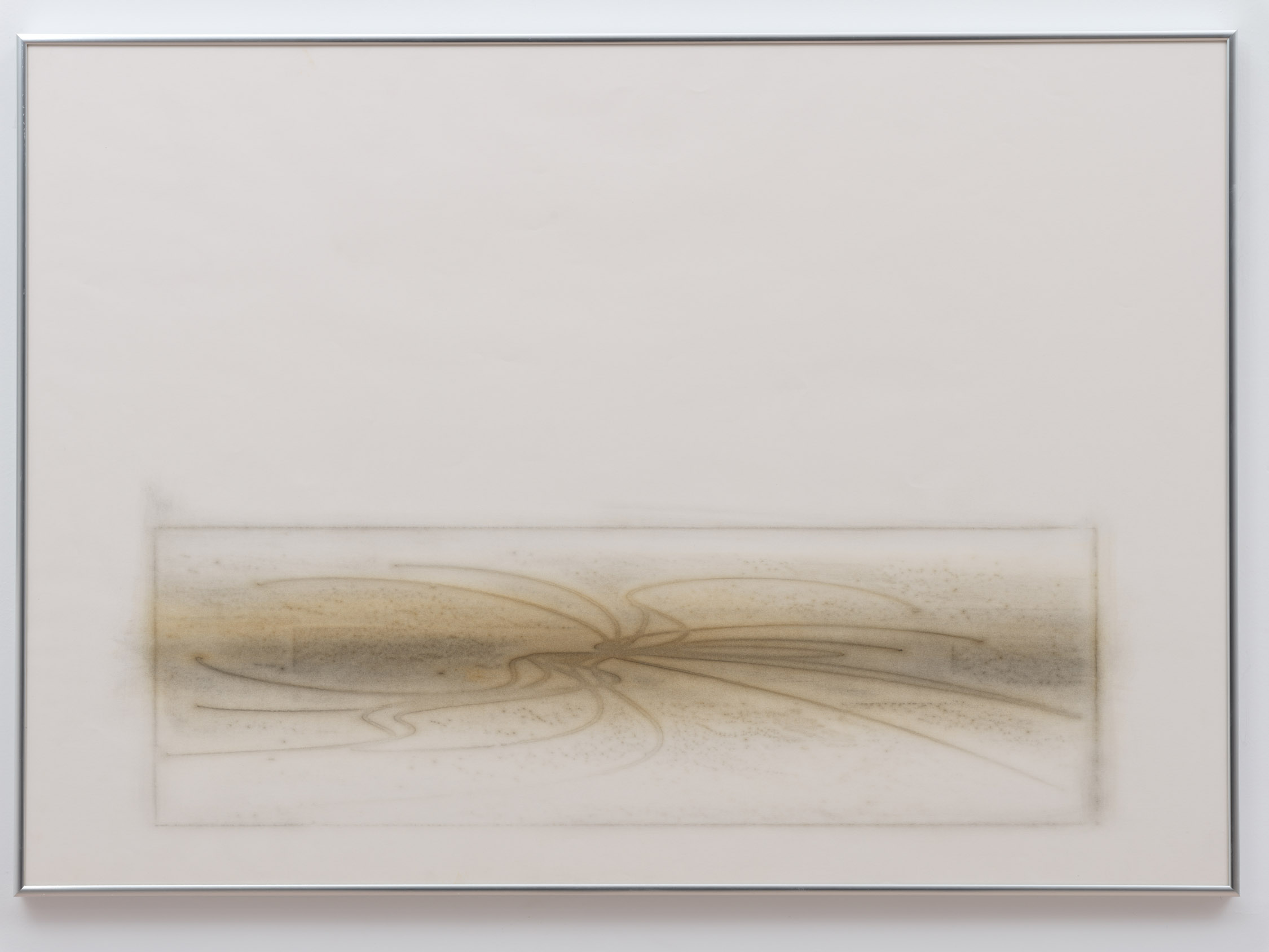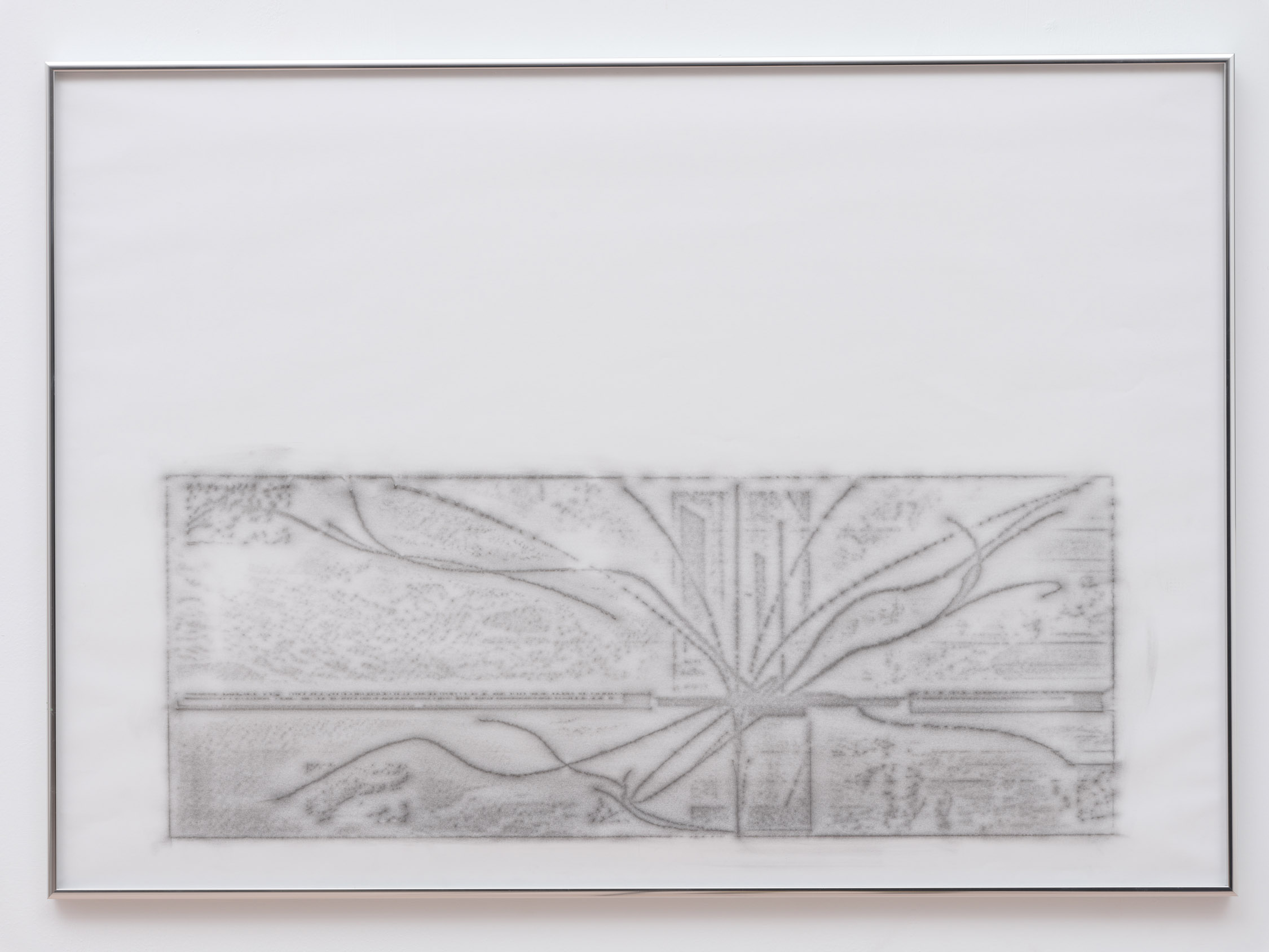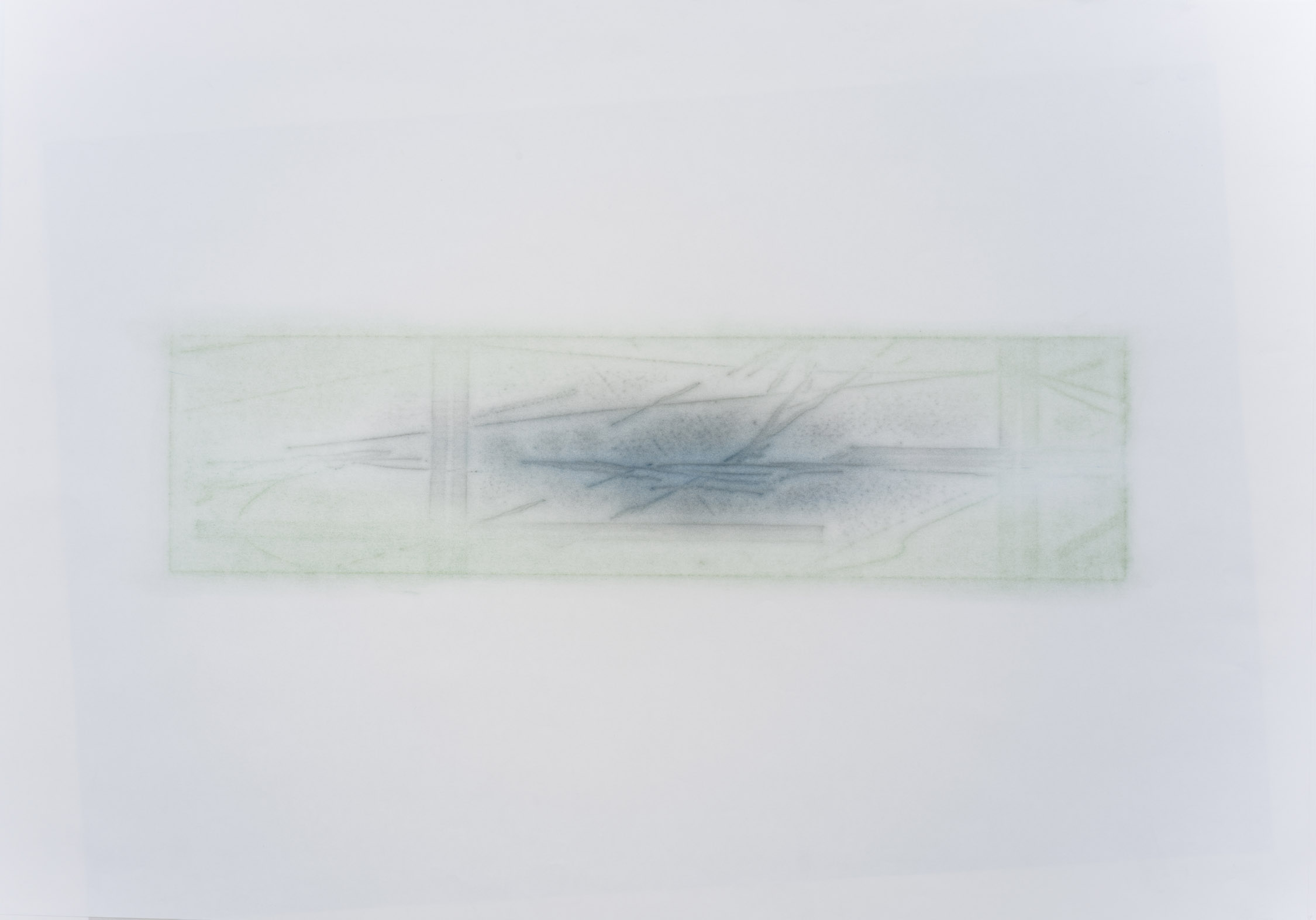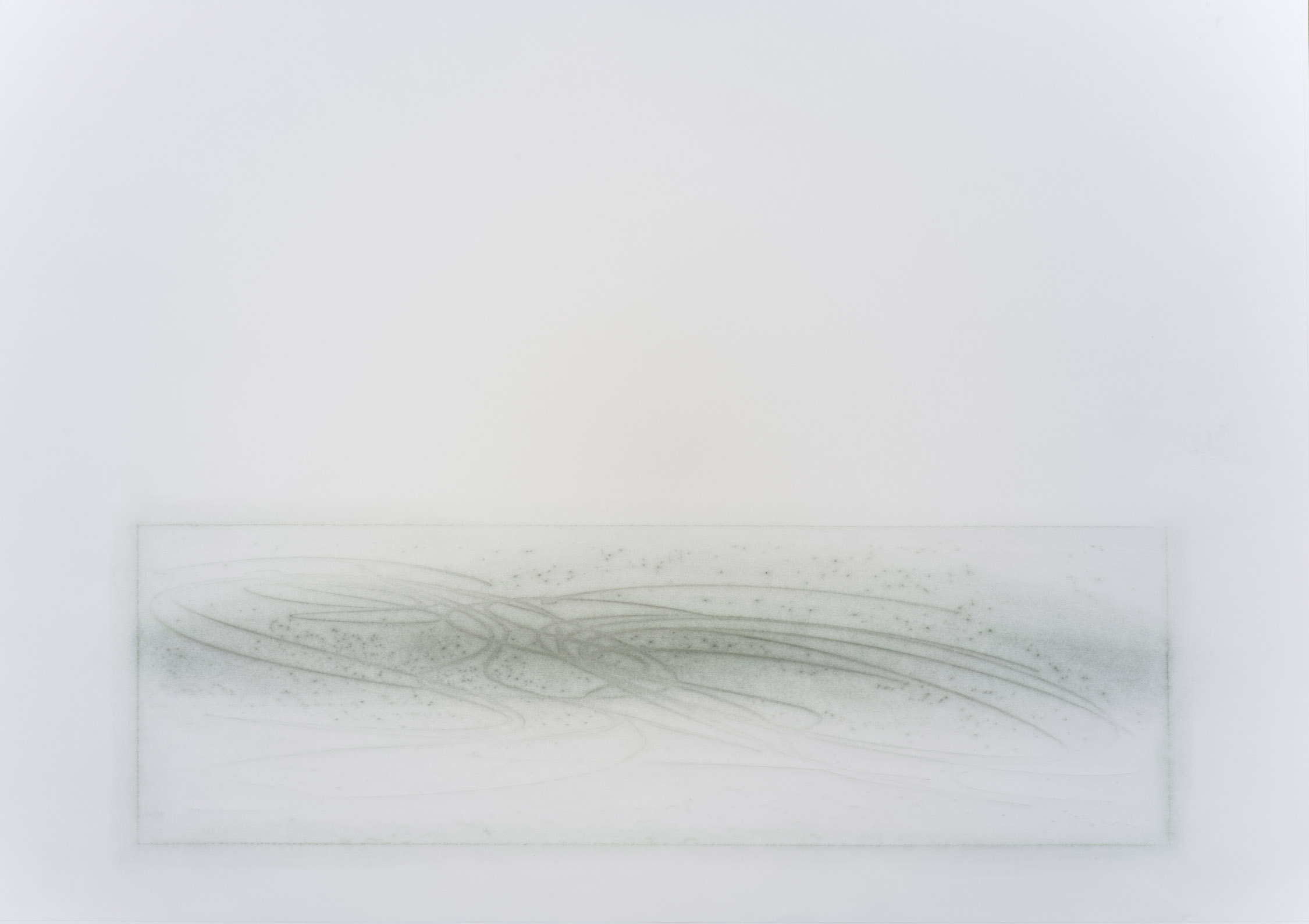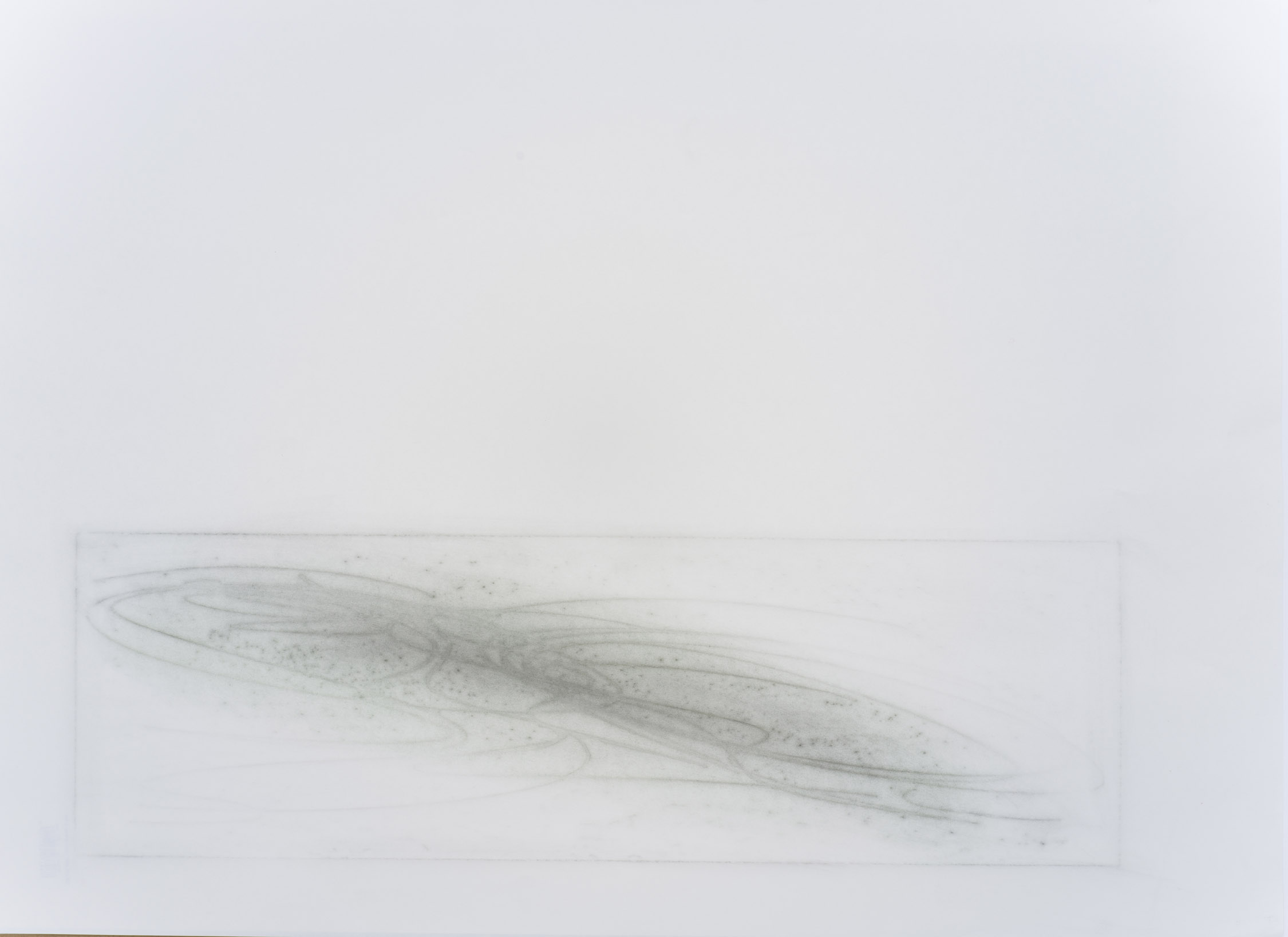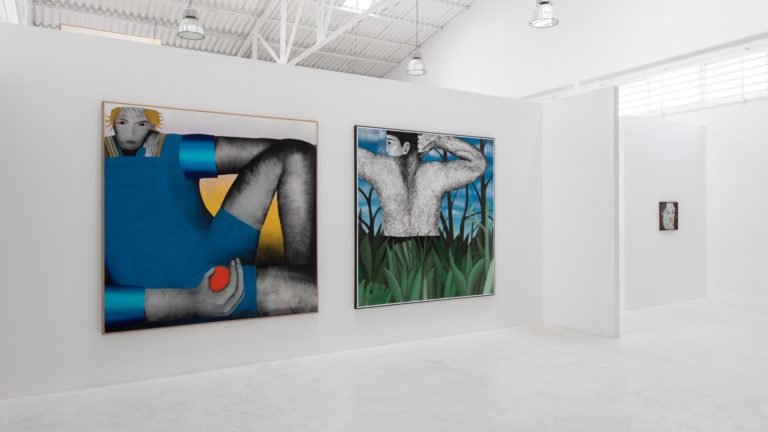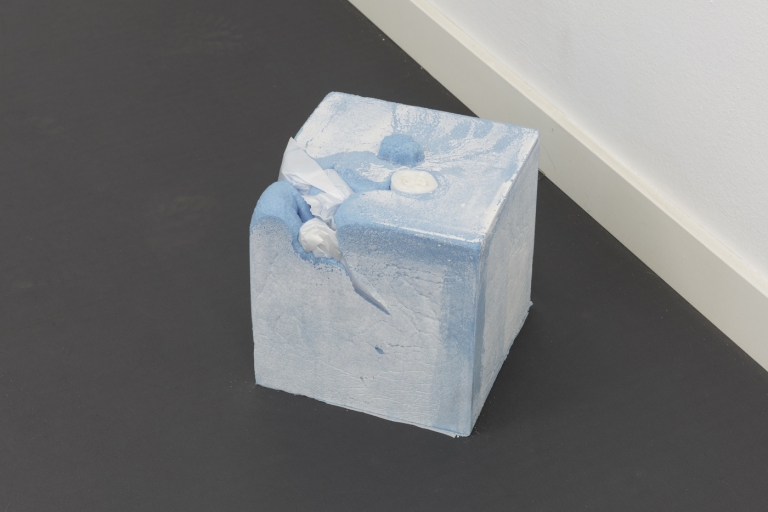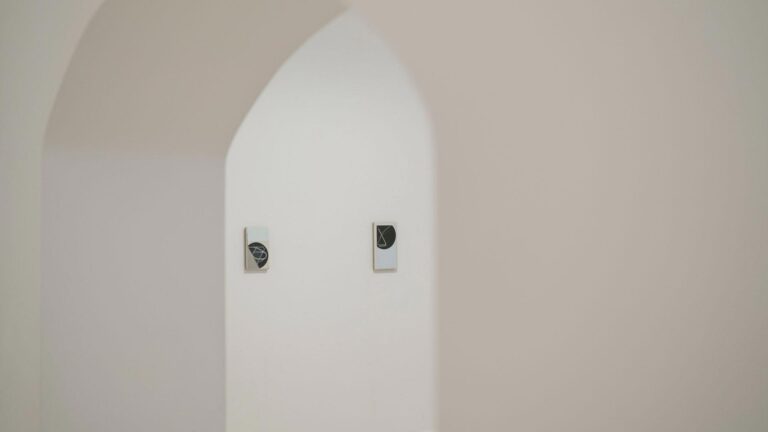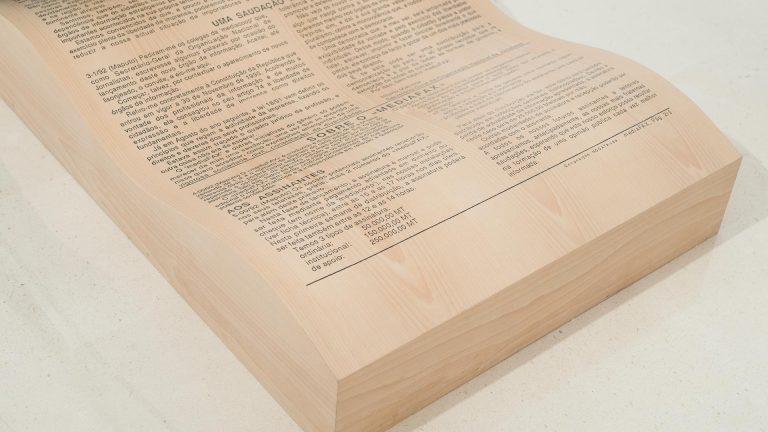Lately, Lucas Dupuy has been particularly preoccupied by the field of fractal geometry, that mathematical concept that exists under the banners of measure theory and chaos theory. Encompassing endlessly repeating, self-similar geometric shapes and patterns of successively smaller scales – sometimes referred to as expanding or unfolding symmetry – fractals occur with surprising frequency in nature and are lauded for both their aesthetic appeal and practical applications. A simple fractal tree can be drawn by continuously bifurcating a single starting stem that doubles into two branches, then four, eight, sixteen, then 32, ad infinitum. Mathematicians have been pushing the non-existent boundaries of the fractal field for over a century, each presenting their own patented, pleasingly pro-portionate and reliably repeatable models – The Mandelbrot set, the Menger sponge, the Sierpiński carpet, even the Koch snowflake. Fractal patterns are observable within algae, DNA, dust grains, river networks, lightning bolts, pineapples and the horns of mountain goats. Many of M. C. Escher’s mind-melting optical illusions contain frag-mented fractals, and fractal analysis has been used with a 93% success rate to distinguish between original and imitation Jackson Pollock paintings.
For Dupuy, above and beyond their undeniable mathematical and theoretical importance, fractals and of interest for their emotive evocation. Their unknown, unnoticed or underappreciated presence in both awe-inspiring natural phenomena and the simple symmetrical satisfactions of everyday existence. That subtle sentimentality of a slowly diminishing scale, approaching absolute abstraction evermore with each iteration, tending towards dissolution yet spared from expiration by the very essence of infinity. Dappled sunlight dispersed through the gaps of leafy tree canopy. Dust or smoke suspended in the air, illuminated by a stray sunbeam. Dupuy seeks to capture these ethe-real, ephemeral moments on the canvas, hanging in the balance of light, shade, hue, tint, tone and texture.
Starting life as a series of airbrushed autonomous drawings – mark-making studies attempting to resign the artist’s hand from their production – Dupuy’s paintings disguise their labour in an effort to appear loose, exemplifying that paradoxical pre-planning needed to achieve a perfectly fabricated moment of supposed freedom. Each prelimi-nary sketch is photographed before a thorough digital examination, a prolonged process of zooming, cropping, zooming and cropping that mirrors the patterned pathways of a slowly shrinking fractal. Then to heavy, hairy hessian – nature again pronounced through the physicality of the fibrous ground – where the warp and weft of the thick weave wait to receive layer after layer of pigmented gesso. The primer hardening into permanence to form dense patches of colour, the negative space of the remaining raw fabric embraced as a shadow. That mathema-tical magic of fractals again implied through sweeping gestural strokes seemingly in defiance of any gravitational or physical constraints. We witness them momentarily manifest on the canvas, while we imagine they continue to inhabit an extended, for now invisibly, plane.
Alongside, a selection of graphite rubbings further nod to natural processes and patterns, dependent as they are on a pre-existing uneven surface, themselves charting the elevations and depressions in a resultant topographical reflection. Introduced into the artistic arena by Max Ernst through the surrealist form of frottage, following his desi-re to document for prosperity the wood grain of a favourite floor accentuated by abrasion from years of use. Com-bining the conventional craft technique with technologically advanced manufacturing methods, Dupuy creates his own textured CNC-carved reliefs ready for rubbing. Each panel a collage of visual references from the artist’s own vast archive, where found images of office ceilings sourced from architectural magazines meet screenshots of Metal Gear Solid video game graphics, or diagrammatic drawings of lichen meet his own photography of sunset over a Swedish snow scene. As perspective and semblance are put aside through the repetitive removal and renewal of the third dimension, the passage back and forth from physical to digital, the rubbings remaining as fossilised imprints of the fictitious landscapes.
-Hector Campbell
LUCAS DUPUY (UK, 1992)
Dupuy’s artworks are imbued with a subtle sentimentality and energetic anxiety, taking cues from archi- tecture, technological advancement, popular culture, language systems, and both the often overlooked beauty and time-honoured tension that arise as man attempts to coexist alongside nature. Fleeting, fizzing forms appear to race across each expanse of canvas, entering and exiting the picture plane in a heady haze. Evidently abstract, yet rooted in an emotional observation of physical space and an empathetic exploration of our immediate surroundings.
Lucas Dupuy (b. 1992, London) studied at City and Guilds of London Art School (2014 – 2017) and took home the Clyde & Co Art Award Prize. Recent solo exhibitions include, It’s An Endless World!, PARCEL, Tokyo (2023); Formless Anxiety, TICK-TACK, Antwerp (2023) and Florist Mews, Castor Gallery, London (2021). He has completed residencies with Project Atami, Shizuoka, Japan (2022) and Gobbledygook, London (2019). In 2019 Dupuy founded his own publishing label, Lichen Books, with All Purpose Studio.


